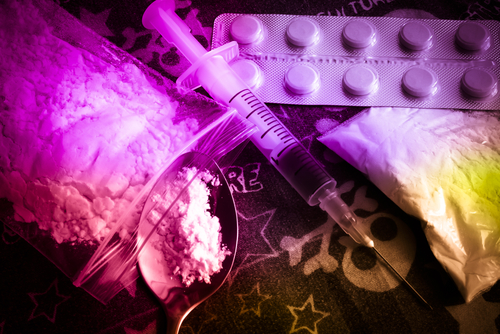When discussing drug use and addiction, one of the most common questions to arise is, “what is the worst drug?”
There is no easy answer. Many variables determine the “worst” drug. It depends on what “worst” really means. Does it mean worst for emergency room visits? Most addictive? Worst for overdose deaths?
The “worst” drug can also vary from person to person. There are many variables that influence how a drug will affect an individual.
Age, health, genetics, lifestyle, environmental factors, even life experiences and race can all play a role in what makes a drug the worst for a person.
Worst Drug for Emergency Room Visits
Any drug has the capacity to cause harm. Each year, thousands of individuals flood emergency rooms seeking treatment for drug-related issues from adverse reactions to overdose. The drugs that are the worst or cause the most emergency room visits are cocaine, marijuana, and opioids.
Cocaine
Each year more than 600,000 people go to the emergency room or are admitted to the hospital due to cocaine overdose. In fact, more than 10% of all drug overdoses that culminated in a hospital emergency room were cocaine-related.
Marijuana
While marijuana is typically passed off as a harmless drug, it can have some serious side effects both long term and short term. Some can require medical attention. Studies show that around 73 emergency room visits per 100,000 are attributed to marijuana use.
Opioids
The opioid crisis has become increasingly troublesome for healthcare workers as well as emergency technicians. In 2016, an estimated 300 per 100,000 individuals seek medical care or are hospitalized for their opioid use. It is at a critical stage as opioid abuse has been steadily increasing during recent years. In fact, the Centers for Disease Control (CDC) says that there is a serious opioid crisis in the United States.
Worst Drug for Addiction
Addiction is devastating. While any drug can be addictive, some are worse than others.
Addiction is a significant problem in our country today. It is estimated that around 38% of US adults have an illicit drug use disorder. In 2017, more than 19.7 million people in the US, starting at age 12, had a substance abuse disorder in the past year.
What is very interesting is that 74% of adults who have a substance abuse disorder also struggle with alcohol use.
Heroin
Heroin is considered a highly addictive drug. According to the National Institute of Health (NIH), the 18 to 25 age bracket has the most incidences of heroin use. Overall, around 300,000 people use heroin each year, and in 2014 overdose deaths were 29,467.
If you are using other substances, that could increase your risk of addiction. An individual who is addicted to:
- Alcohol – twice as likely to become addicted to heroin
- Marijuana – three time more likely to become addicted to heroin
- Cocaine – fifteen times more likely to become addicted to cocaine
Cocaine
There are an estimated 2.2 million cocaine users in the United States who are 12 years old or older. It is the second most trafficked illegal substance in the US and the world.
The 18 to 25 year old age group is the largest group with the greatest potential for abuse. Cocaine is extremely addictive and expensive. Each year, cocaine addiction accounts for a substantial part of healthcare costs in the United States. More than 500,000 drug related hospital visits are connected to cocaine use or addiction.
Methamphetamine
Methamphetamine, or meth, is a highly addictive substance. More than 774,000 people, age 12 and up, used meth in 2017. It is a dangerous drug, with more than 5,000 people dying from meth addiction each year.
Many experts consider methamphetamine to be one of the worst drugs overall because it is so addictive.
Worst Drug for Overdose Deaths
Drug overdose is a serious problem today. In the United States in 2018, there were 67,367 deaths from drug overdose. While methamphetamines have led the way for several years, opioids have taken over the race for most overdose deaths.
Many drug overdoses are accidental. The person may take more of a drug because the current dose no longer gives them the high that they are after, or they simply don’t realize how much they have taken. Other overdoses are intentional. Typically, the person wants to harm themselves. Either way, it is a tragic occurrence.
Two of the worst drugs for overdose are methamphetamine and opioids.
Methamphetamine
Meth is a vicious drug that has a great capacity for fatal overdose. In 2017, methamphetamine was responsible for more overdose deaths in the western US than any other drug. Nationally, it is the 4th leading cause of overdose fatalities. There were 70,237 deaths due to drug overdose in 2017. Meth accounted for 13% of those deaths.
Fentanyl
According to the CDC, the most common drug overdose is fentanyl. In 2017, fentanyl made up 39% of the total overdoses nationwide. The drug is a synthetic opioid pain reliever that is prescribed by a doctor. However, it is commonly made illegally, laced with another substance such as cocaine or heroin, and sold through illegal drug markets. These additives make the drug even more lethal.
Opioids
Opioids are a growing concern in our country as the death rates due to overdose continue to steadily rise. In 2018 it was estimated that an average of 128 people were dying every day from prescription drug overdose. Of all opioid deaths, prescription opioids make up 32%.
There are several types of drugs that fall into the opioid category. There are natural opioids which are medications like codeine and morphine. Semi-synthetic opioids such as hydrocodone, oxymorphone, oxycodone, and hydromorphone are used for pain. The third category for opioids is methadone, a synthetic opioid that can be used for pain, but can also be used to treat opioid use disorders like addiction.
So, what is the worst drug? There is no easy answer. You must take into account the individual as well as what worst means. Ultimately, any drug can be detrimental when abused. Any drug holds the possibility of addiction and should be treated in that manner.
Sources:
- Drug Abuse Trends and Statistics
- 2017 NSDUH Annual National Report
- HCUP Fast Stats – Opioid Related Hospital Use
- Opioid Overdose Crisis
- Heroin Trends and Statistics
- Centers of Disease Control and Prevention
- Trends and correlates of cannabis-involved emergency department visits: 2004 to 2011
- Trends in the Rate of Opioid-Related Hospitalizations


